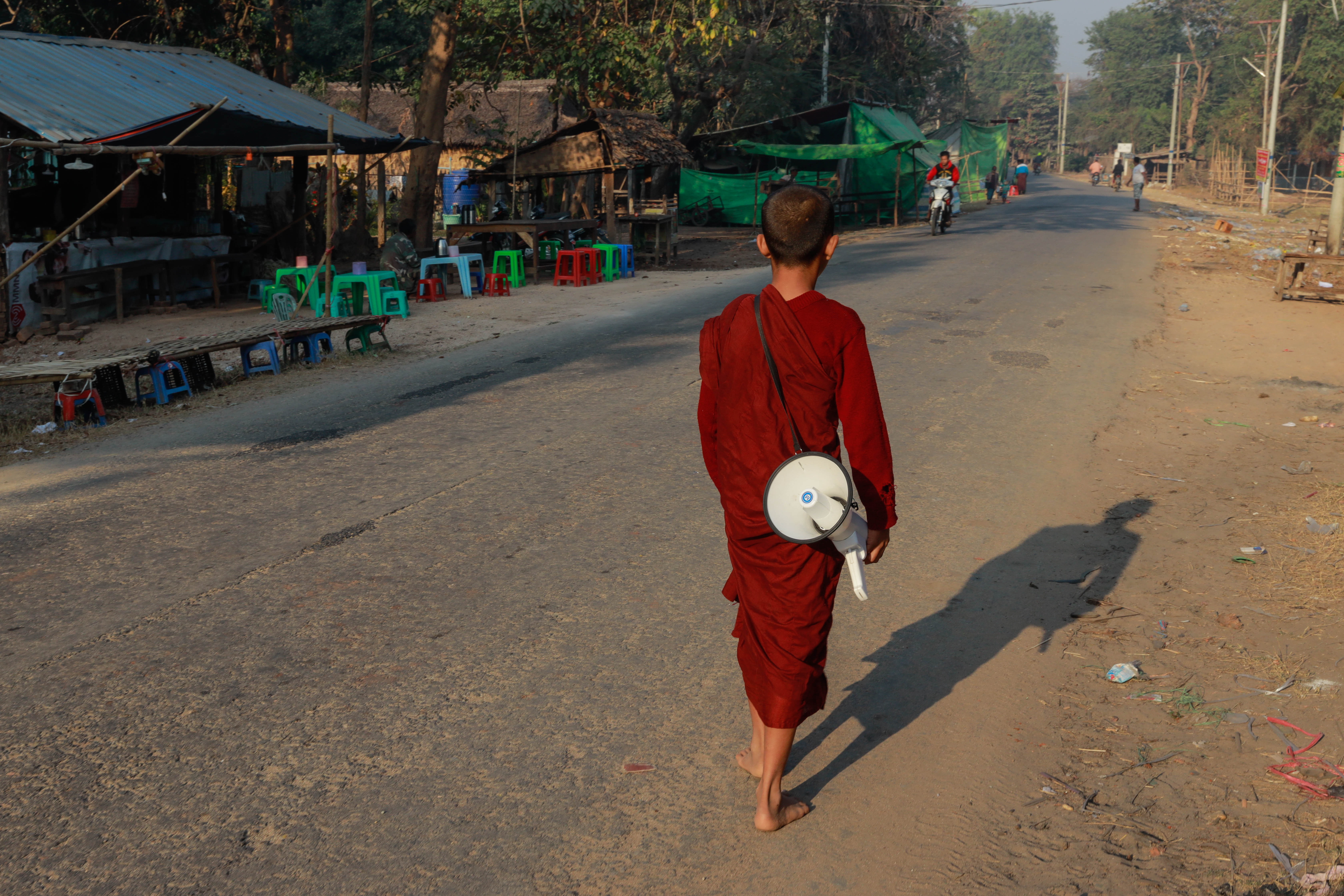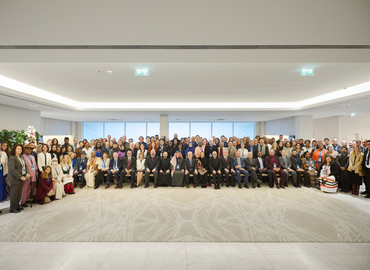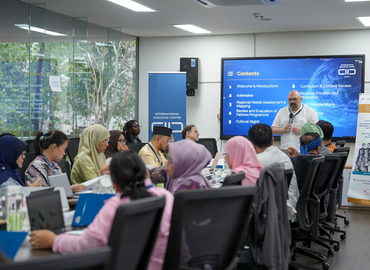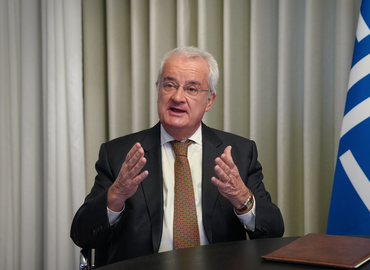An Axiom of Participation: The Role of Religion in Peacebuilding and Conflict Prevention

When it comes to conflict, religion holds a paradoxical place in the public imagination.
Religious actors acknowledge that they and their religious communities often fall short and that their faiths have been twisted to fuel hate and violence.
At the same time, representatives from across the religious and political spectrum believe that “when it comes to today’s crises, religion isn’t just part of the problem—it’s part of the solution.”
The G20 Interfaith Forum, scheduled to be streamed from Saudi Arabia from 13-17 October, highlights how interreligious cooperation can help solve global challenges, bringing together religious thought leaders and political representatives to seek solutions to some of the world’s most intractable problems.
According to conveners, the goal is to ensure “that the rich, countless ideas and actions of the worlds’ religious communities about global agendas are heard and understood.”
As a global leader in interreligious dialogue, KAICIID is a key partner in the G20 Interfaith Forum.
One of the prime emphases of this year’s forum will be on the role of religion in peacebuilding and conflict prevention. Representatives from various regions will wrestle with how faith communities can inform, and help enact, policy related to countering hate speech, protecting sacred sites, addressing violent extremism, promoting inclusive citizenship, and preventing human trafficking and modern slavery.
For Katherine Marshall, senior fellow at the Berkley Center for Religion, Peace, and World Affairs and Executive Director of World Faiths Development Dialogue, it is not only important that religious communities be involved in peacebuilding and conflict prevention, it is part of their DNA.
“The role of the peacemaker,” said Marshall, “is part of the fundamental ethos for many religious traditions.”
Moreover, she said, “because religion is a part of many conflicts, it adds a special dimension to the need for religious leaders to be involved in resolving them, whether it's fringe parts of the tradition that are involved or whether it's a misunderstanding or an interpretation.”
Conflict, she explained, can easily derail other aims religious communities aspire to achieve. “If you're not dealing with conflict, you're not able to move towards the kind of world that we're all looking for,” she said.
One of the most conspicuous and complex conflicts that has captured public attention and commanded political attention is the sectarian violence resulting from decades-long multi-dimensional structural conflicts in Myanmar.
Rev. Mahn Palmerston, who leads the Myanmar Council of Churches as Secretary General, knows the conflict all too well. With 25 years of experience in interreligious work, Palmerston said it’s important for people to understand that there are, “many ethnic groups in Myanmar, people of different backgrounds, different cultures, people from the mountain areas, from the delta area, different dialects, different colors.”
According to Palmerston, all this diversity, can lead to misunderstandings, disagreements, and open hostility. However, religious leaders — regardless of their faith — are called to “protect peace in our community.”
Palmerston has been called beyond his Christian community to help mediate conflict. Once, near the Myanmar-Thailand border, Palmerston was brought in as a peacemaker when a local Buddhist community wanted to build a temple in close proximity to an existing church.
Soon, what started as a simple disagreement boiled over into open conflict. Using his skills in the local Karen language, Palmerston was able to halt the construction project and build a pathway toward peace between the conflicting communities. As an outsider, he reminded them that whether they were Buddhist or Christian, they speak the same language, share the same land.
“Normally they used to kill people over these kinds of problems,” he said, “but this time, no one was killed, not one drop of blood.”
Sadly, Palmerston is aware peacemaking and conflict prevention is often not that simple. “For many years, we’ve lived together without problems” he said, referring to the diverse religious groups that have lived in Myanmar for decades.
Today, he says, Myanmar faces conflict among these previously peaceful groups, which is “a manmade reality”. Blaming the discord on economic, political, and educational discrepancies and disagreements over scant resources, Palmerston hopes the conflict will be overcome soon.
He added that religious leaders have a responsibility to show that “we are not Muslims or Christians or Buddhists, we are the same people.”
“We all want the same things: love, sustainable peace, human rights.”
Dr. Youssef Bin al-Mahdi of Abdelmalek Essaadi University in Tétouan, Morocco and a 2018 KAICIID Fellow, said that in trying to find such unity, the temptation will be to “empty religion of its soul” in an effort to find common ground.
This, he said, would be a mistake.
Instead, al-Mahdi strives “to spread awareness of cultural and intellectual diversity” on the one hand and appeals to “common identity and one human civilisation” on the other.
In the end, he said, it comes down to everyone making a choice. “We choose the life model we want, based on what we believe in and we harness our capabilities to achieve it,” he said, “if we believe that peace should prevail on earth, we will invest all our energies in seeking to achieve it. And vice versa.
“I do not envision a life without difference or diversity, so I believe we have to work to understand the wisdom of difference and consider religion as part of a realistic, effective, solution to the problems of humanity.”
Rabbi Jorge Knoblovits, President of the Delegación de Asociaciones Israelitas Argentinas (DAIA) and coordinator of the G20 Interfaith Forum’s “economic and social challenges” working group in Latin America, emphasised that in a tumultuous world, religious institutions are critical to address shared challenges.
“With so much hatred, violence, persecution and exclusion, we must reinforce the paths of understanding through interreligious dialogue,” he said.
Knoblovits said in Argentina the Jewish community — together with Catholic, Muslim and other religious communities — seeks to build a society where coexistence between religious traditions is natural. Interreligious cooperation and dialogue should not be abnormal, but baked into the very basis of civil society.
This, he said, requires education and the “deconstruction of old cultural paradigms in our own communities that have been engrained over generations.”
At the same time, he said “religious institutions have to be heard in civil society, so that our vision and recommendations can help shape the policy and agendas of addressing our common social problems.”
Al-Mahdi agreed: “It is not wise to ignore religious institutions in policy discussions, especially when the world is witnessing the power and influence of religious discourse.”
Al-Mahdi hopes that the upcoming G20 Interfaith Forum will provide an opportunity to rectify ignoring religious actors and discourse in the past. “It was a mistake, because it has only increased problems and conflicts, especially with the rise of violent extremism in the name of religions.”
“The axiom for policymakers has to be participation for religion,” he said, “because it is a major actor in the real and virtual society, and it has the potential to positively influence the solution of our social, economic, political and environmental problems.
“The advantages of partnership between religious institutions and governments are many,” he said, “and the negatives of ignoring them are very dangerous.”

- KAICIID marks 10 years of global peacebuilding, uniting over 130 leaders in…

Ten years ago, the KAICIID International Fellows Programme began with a simple goal: to…

